Members of e90Post,
You may recognize this from another thread--I'm choosing to re-organize my reviews into separate threads. This will hopefully allow for vendors, potential customers, and satisfied/unsatisfied customers to convene and discuss the product, and ask me questions. My hope is that this will lead to a more productive, less confusing conversation! It also places less demand on me to get all the reviews done at the same time, which is proving to be impossible to accomplish for a myriad of reasons.
If at any point one of you believes you have a better way for me to do things (or that I'm showing bias) I encourage you to bring it up in a post and/or a PM! I'm trying to do this for all of us, so I don't want anyone to feel as though a product is not receiving a fair and impartial review.
I’m going to be starting off with one of the biggest names in the product category—LUX Angel eyes. Marc has graciously loaned me one LUX H8 V4 unit to perform testing.
Build quality of the LUX H8 V4:
I believe this is the gold standard of any aftermarket part. The “bulb” itself is beautifully machined metal, with no perceivable burrs, marks, or other visual imperfections in the metal. The finish is a semi-gloss black (perhaps a powder coat), and it is also of excellent quality.
The 8x LED emitters (4x of one type, 4x of another) are expertly attached to their boards, and all soldering jobs are neat and clean. Each of the LED pairs have their own board, and it appears that ample thermal paste was applied to help take the heat away from the delicate LED emitters to the metal bulb itself.
The 4x wires entering the angel eye are extremely thick, and I have confidence they will never wear out or become brittle. Power wires going in to the well-built LED driver are 18 AWG

, which is excellent, and thicker than the OEM wiring to the AE’s. To change the color temperature of the product, one simply flips a series of 4 micro “light bulb-like” switches to change the perceived color temperature from 5000K->12000K. I might have gone with
slightly less user-friendly slider-style switches to remove even the most remote possibility that a switch could be jostled while driving. However, I trust that LUX tested his design to ensure that the H8 V4’s cannot become surprise color-changing AE’s!
Light output – pre installation:
Wow. I knew these were going to be bright, but I definitely wasn’t expecting them to be this bright! Part of the reason they’re so bright is that this
uses a proper LED driver—part of why the LUX’s cost more than your average PnP unit. This means that the angel eyes are perceived to have the same brightness whether the headlights are on or off! For those who don’t know, the standard (uncoded) behavior is to reduce the voltage to the AE’s when the headlights are on. Most other units will dim with this change.
I have coded my vehicle, so I don’t have this problem, but it’s still worth mentioning.
One thing to note is that the LUX’s don’t fade off as cleanly as other units, due to the constant-current LED driver. Once the voltage drops below a certain point, the LED’s pulse before shutting off. This pulsation period lasts for less than a second. On some color settings, the color of the AE's also changes during that fading process. That being said, there are pros and cons to both ways of driving the LEDs, and I can't allow myself to be bothered by only a brief moment of flicker on shut-off.
But just so it's clear, I did not have any flickering or pulsing while the angel eyes were operating or turning on.
Special Feature - Constant-Current Driver:
One way to cut costs in a PnP Angel Eye is to use resistors to limit the current to the LEDs in the angel eye. One plus of this is that it allows for smooth dimming when the AE's turn on and off, but it also means that they will dim when the headlights are turned on (unless the vehicle is coded). And even when the vehicle is coded not to dim the AEs when the headlights come on, our lighting modules are working away, quietly pulsing the current to the angel eyes.
LUX's constant-current driver handles pulsated electrical input with aplomb, and it definitely contributes to the brighter output of this unit. PWM in LEDs can easily be seen on cameras, or on fast-rotating objects (like ceiling fans). Here's a freeze frame from a quick video I took that demonstrates the difference between a typical resistor-driven angel eye and LUX's constant-current buck driver. Please take note that this rolling/strobing effect seen in the video is imperceptible to the human eye, but LEDs react fast enough for it to show on camera, and it could be part of the reason most aftermarket units are dimmer:
LEFT SIDE: Typical Aftermarket PnP AE
RIGHT SIDE: LUX constant-current-driven H8 V4's
Special Feature - Color Changing:
I want to devote a little more time (and some more pics!) to the color changing system on these bulbs. It's both a unique feature and in how it works. Essentially, there are 4x blue LEDs, and 4x white LEDs. Depending on how the switches are thrown, different LEDs turn on, off, or dim, and the light is mixed in the reflector/AE tubes. It's a neat exploit of Hella's celis technology. Below I have included a picture of the various color settings. Nitty Gritty: I set my camera up on a tripod, locked the exposure, used a circular polarizer to cut some of the reflections on the headlight housing, and fired away. I shot in RAW, so I locked the white balance to 5,000K in post, applied a medium contrast curve, and stacked up the images in photoshop. The 12,000K looks a little too blue (esp. on the inner ring) but the rest look pretty good on my color-calibrated screen.
--NOTE: THIS DIAGRAM IS NOT PRIMARILY LOOKING AT BRIGHTNESS, BUT AT COLOR!! I would also highly recommend going to flickr and downloading the full-size image.--
 LUX H8 V4 - Color Temperatures
LUX H8 V4 - Color Temperatures by
RobStone, on Flickr
Light output – in the rings:
The inner ring is BRIGHT. I mean, seriously bright. Easy to see in the daytime, phenomenal on a cloudy day, at dusk, or at night. Given the poor design of the outer ring, I’d say that LUX has done the best he could. It looks great from most angles in dusk/dark/dawn light, and even in bright, direct sun it looks pretty good. I personally don't like the higher color temps (not my style and it doesn't match well with the rest of my lighting setup) but the higher temp colors stand out more in daylight.
NOTE: I had a section here comparing these to an old HPB 20W unit. However, since the HPB's I currently have access to are outdated and have experienced exceptional abuse, I have come to the decision that it would be unfairly damaging to the reputation of HighPerformanceBulbs to compare an old product with almost 2 years of harsh life on it to a cutting-edge brand new one. I was neither compensated nor contacted by any party to make this change.
Let's take a look at both color and light output. Since the LUX H8 V4's have the unique color-changing feature, some of you may find yourselves asking how different color settings may impact the light output of the rings. I have chosen to answer this for you, in true "Ultimate" Fashion.
My car was parked about 45" away from a white garage door, with the headlights then being approximately 50"-54" away from said door (due to curvature of lights). All photos have the same 4 sec shutter speed & f8 aperture setting. I chose the daylight white balance setting and splashed it across all the photos, since there really isn't an ideal white balance setting for this sort of comparison (I had all the lights off and just fired up an individual angel eye).
If you want to compare two settings, I suggest going to flickr, and opening two browser windows. Then compare what you want side by side, and use the color guide from above as another reference.
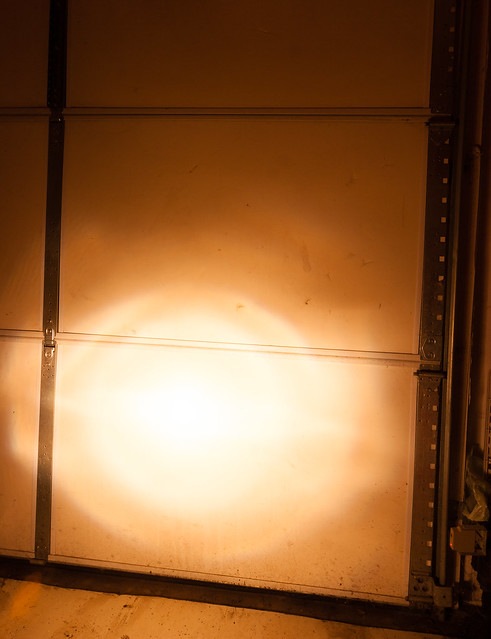 Stock Halogen
Stock Halogen by
RobStone, on Flickr
 LUX H8 V4 - 5000K
LUX H8 V4 - 5000K by
RobStone, on Flickr
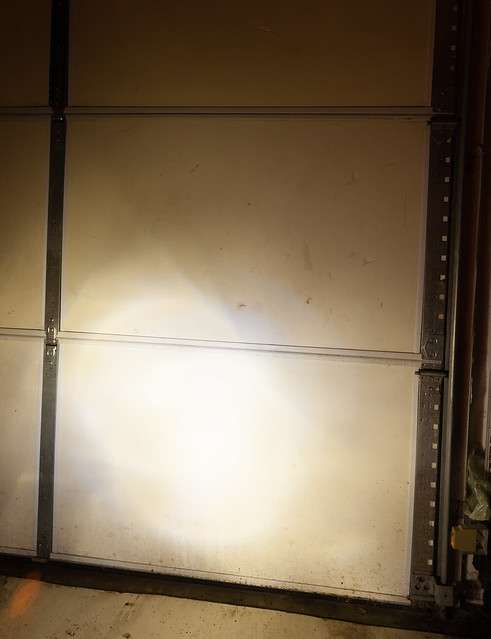 LUX H8 V4 - 5200K
LUX H8 V4 - 5200K by
RobStone, on Flickr
 LUX H8 V4 - 5700K
LUX H8 V4 - 5700K by
RobStone, on Flickr
 LUX H8 V4 - 6300K
LUX H8 V4 - 6300K by
RobStone, on Flickr
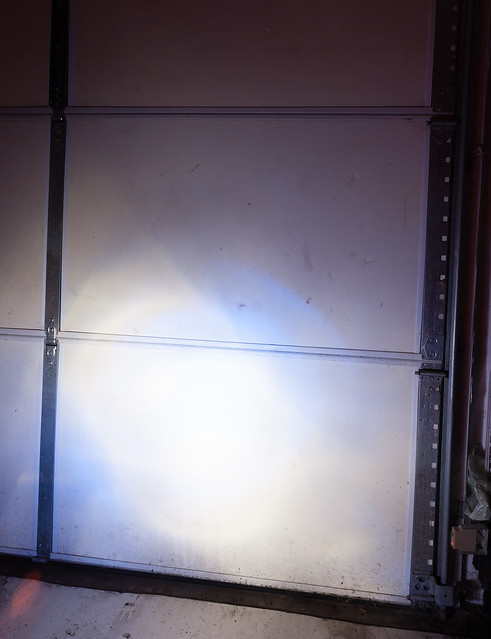 LUX H8 V4 - 6900K
LUX H8 V4 - 6900K by
RobStone, on Flickr
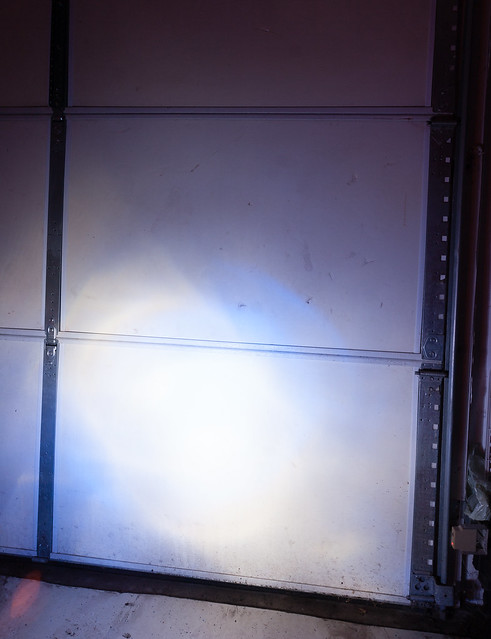 LUX H8 V4 - 7800K
LUX H8 V4 - 7800K by
RobStone, on Flickr
 LUX H8 V4 - 8800K
LUX H8 V4 - 8800K by
RobStone, on Flickr
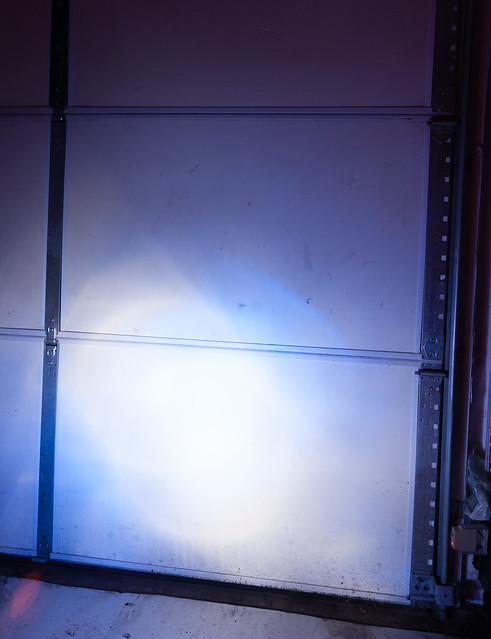 LUX H8 V4 - 10000K
LUX H8 V4 - 10000K by
RobStone, on Flickr
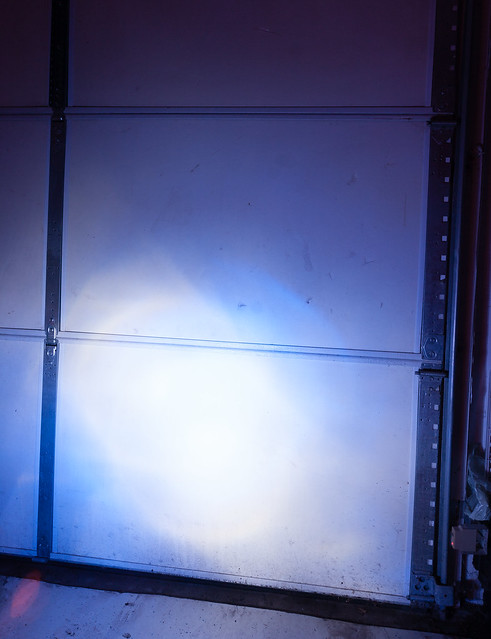 LUX H8 V4 - 12000K
LUX H8 V4 - 12000K by
RobStone, on Flickr
When I look at that, I feel confident that is "the Ultimate" coverage of the LUX H8 V4's light output down the tubes. As you can see, some colors mix better than others, but all colors seem to produce about the same amount of light. Great job with that, Marc!
Overall:
These are very solid AEs, and the color-changing feature is something that sets it apart from the rest of the pack. Compared to a 2-generation old product, they performed well.